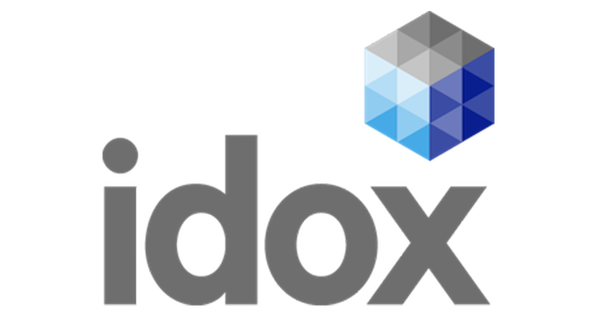Doing government differently: what’s next for local digital services
Over recent years, tight budgets – along with the call to work smarter and transform quicker – have combined with changing citizen expectations to drive digital change. However, the pandemic-driven shift experienced in 2020 has left many local authorities struggling to keep pace with increasing demands from citizens, who are expecting access to public services that match the private sector organisations they deal with online every day.
As thoughts turn to supporting the recovery process, it’s time to consider which changes are here to stay. There has clearly been appetite for well-designed digital services, with Edinburgh City Council reporting a 35% uptake of online services since the pandemic, compared to 8-10% previously. On a nationwide scale, HMRC saw a record high in customer satisfaction with digital services, weighing in at 85.2%, and rolled out additional services like virtual assessments and webchat support.
Will local government continue to bounce back and embed the progress made on reconfiguring digital services?
An ecosystems approach
An ‘ecosystems’ approach to technology within the local government sector – that is, removing siloes and ensuring applications can communicate with each other – directly improves the life of citizens. This can be achieved through smart application of data analytics and intelligent insight.
But too often, progress continues to be constrained by a narrow view of transformation that focuses on delivering one-off projects or automating basic transactions. Most people already have a strong understanding of how to use digital platforms and portals in order to access the services or support that they need, so any digital vision within local authorities needs to stretch to accommodate this.
By taking a more holistic and connected approach and using data, digital and user-centric design approaches it is possible that councils can make their services more efficient, effective and transparent.
New technologies undoubtedly have the potential to transform local government. Here’s some evolving digital services:
- Chatbots and AI: Machine learning and the use of automated chatbots to deal with common customer service queries offers large potential cost savings, freeing up staff time to deal with more complex queries
- Live chat: Interactive online chat is another avenue that the local government is looking at to improve accessibility. Research for the Scottish Government, for example, highlighted interest amongst planning authorities for using chat services to improve perceived customer service
- Voice-enabled services: For the last few years, the focus has been on delivering mobile-first design, but within five years, the prediction is that voice search will have gone mainstream. Already 1 in 10 households in the UK have a smart speaker. Local government will need to consider how to support and optimise its digital channels for voice-assistance
- Personalisation: Digital apps are already allowing people to manage personalised budgets within health and social care. Voter registration and elections is another area where personalised apps are being used to increase turnout and engagement
- Mapping and tracking: Effective asset management can allow public sector organisations to make efficient use of existing assets, while identifying areas that need investment
- Virtual/Augmented Reality: Beginning to be used worldwide as a consultation and engagement tool for major development projects, and as a training tool within health services. It has been used in Northern Ireland in 2019 to explain to people with learning disabilities what to do when they go to vote
Ensuring privacy and UX
The use of digital identities has wide potential within public services, including within the area of elections. However, successful launches of digital services are underpinned by the ability to scale and facilitate compatibility.
Idox has already supported local government with implementing reform of the annual canvass system, which checks who is registered on the electoral roll. And TechUK has identified voter registration, polling and e-voting as a key area where digital identities could provide benefits both for citizens and public sector organisations.
Expectations around digital offerings are already high among citizens – this is largely driven from their B2C (business-to-consumer) exchanges, for example through their online retail transactions. With this in mind, local authorities have been focusing on delivering seamless experiences to match these expectations. Easier said than done, though – the challenge has been managing disparate legacy systems, disjointed workflows and costly overheads. Along with funding restraints, these factors can slow down transformation.
Access for all
Digital exclusion among the UK adult population must be taken into consideration. Research by Ofcom has suggested that as many as 1 in 10 UK adults were digitally excluded in 2020. With this in mind, local authorities have added responsibility to try and prevent discrimination in their service delivery.
Cloud adoption has been high on the Government agenda since 2013 following the UK Government’s ‘Cloud First’ directive rolled out in 2013, which continues to influence procurement decisions. Rightly so, as cloud technology is a known driver in successful digital transformation projects.
The access and collaboration enabled by cloud infrastructure translates into agility, resilience and assured business continuity. For local authorities, cloud technology can also play a part in addressing the challenges of their potentially vast geographical spread. Secure data-sharing is key here.
Direction digital
Public services have experienced a seismic shift in the right direction – through crisis conditions, we have seen enormous progress in service delivery and connectivity. Continued success relies on building upon these digital foundations, laid by cloud infrastructure and investment in digital skills training and literacy.
There is much opportunity for local government to continue this momentum and promote social good and improve the quality of life of citizens through excellent publicly-funded digital services. A focus on simplifying complex processes and enabling the efficient delivery of these services will lay the foundations for further progress as the country comes out of the pandemic.
Read the full whitepaper here.






